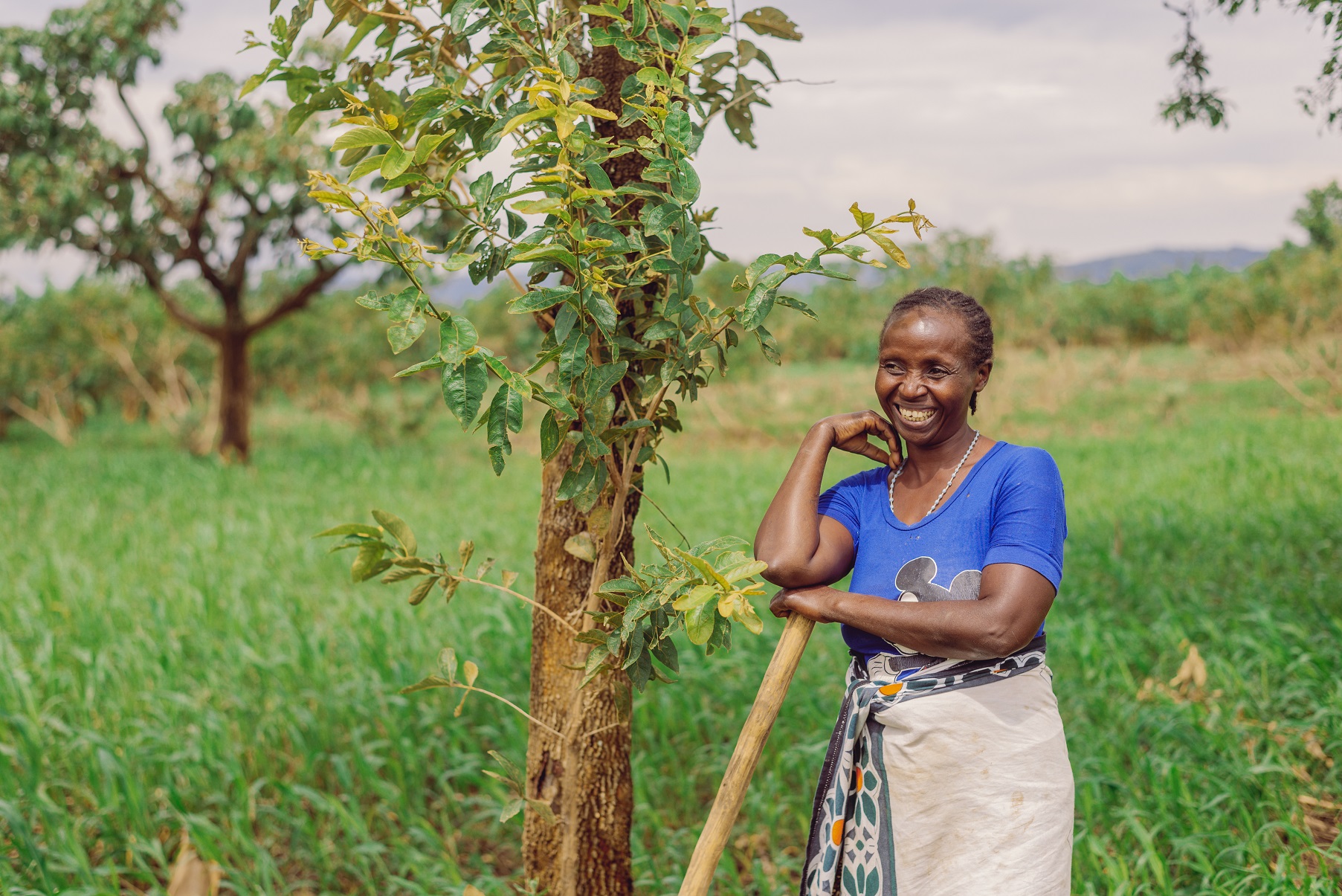“It usually rains in March, August and September. Sometimes the rain comes too late to help our plants grow. Sometimes it rains far too hard and the plants are ruined,” says Aulelia Leonidas.
She lives and works in the village of Kihinda, in the north-west corner of Tanzania on the border to Rwanda and Uganda. The family’s house of mud and corrugated metal is embedded among the banana plants. A chalk greeting above the door reads, Welcome, make yourself at home. Aulelia, 49, lives here with her husband and seven children.
“We eat twice a day, in the afternoon and evening,” she says, adding that the children eat first. “To be honest, what we eat isn’t that nutritious, which is a shame. We don’t have enough food either. With what we get from our own household and our income, we mainly eat plantains and beans, or cassava and beans. Sometimes we eat cornmeal porridge and beans. We hardly ever eat meat or fish. We can rarely afford that kind of food as we’re just regular farmers,” explains Aulelia. “We’d like to have tea for breakfast but can’t afford milk and sugar. In the mornings, we go straight out into the fields and work,” she adds.
Eight out of ten Tanzanians cannot afford to eat their fill of healthy food. Most of them are smallholder farmers. Agriculture accounts for 27 per cent of Tanzania’s GDP, and employs the majority of the population. The sector almost exclusively comprises smallholder farms with low productivity. These farms are dependent on rain and farmers rarely have access to high-quality seeds or fertilisers.
Aulelia Leonidas and her family grow plantains, coffee, beans, maize, millet, and fruit and vegetables like papaya, avocado and citrus fruits. They dry the coffee beans and sell them to state buyers. Before the coronavirus pandemic, they would sell their coffee on the other side of the Ugandan border, as it paid better. Now they get about €34 for a 100-kilo sack of dried coffee beans.
“We generally put some aside for the family, in case there’s a drought next season. If you don’t put part of the harvest aside to eat in the future, the food might run out. It’s important to set aside and save food to reduce the risk of starvation,” says Aulelia.
In addition to the effects of climate change on the rain, the quality of the soil is a challenge. Aulelia has worked the land since she left school, and she says the soil has deteriorated over the years.
“I don’t think our land is as fertile as it used to be before. When you use it over and over again, the soil becomes degraded. We can now expect a smaller harvest of beans per hectare than a few years ago,” Aulelia explains.
Even so, this year the farmers in the area have had a record year. For Aulelia, the harvest has improved since she made gullies among the plants to collect the rainfall. Another reason is that she has planted trees, which help to bind the water in the ground. Also, composted leaves from the trees turn into fertiliser and make the soil richer again.
“We use better growing methods now,” she points out.
Agroforestry is a farming system that involves growing trees and bushes around or among crops or on pastureland. The trees provide nutritious fruits and nuts as well as animal feed, while they also provide shade and help to keep the moisture in the soil and prevent erosion. With the right species and methods, the trees can give back more water than they use, and can make the soil richer in nutrients.
Since a couple of years back, Aulelia is a member of the Foundation for Local Capacity in Agricultural Development, FLCAD. It is a member-based organisation to help local smallholder farmers, for example by boosting the farmers’ business skills, and developing the application of agroforestry and gender equality issues.
“The farmers around here often sell their produce at far too low a price to middlemen. It’s easy and brings quick money, but the middlemen often swindle the farmers with weights and measures. They also set their own prices which makes the prices completely unpredictable, and is a great source of uncertainty for the farmers,” says Grace Bugama, coordinator at FCLAD. “FCLAD supports the farmers by securing access to quality seeds for better products and higher selling prices. We help to pack the products for sale to wholesalers, so the farmers can sell directly to the buyers at markets where they use verified weights and measures,” she adds.
Areas that use agroforestry have greater biodiversity, bigger harvests and more nutritious crops, and the farmers are more financially independent. Food security is more evenly distributed throughout the year, and local food markets are supported and maintained.
“Food security is being able to eat a balanced diet of healthy food that gives energy and protects the body,” Aulelia Leonidas concludes.
Hear Aulelia herself share her thoughts in this video:
TANZANIA
Population 2020: 60 million
Unable to afford a healthy diet 2017: 85%
Children under 5 who are stunted 2020: 32%
Agriculture’s share of GDP 2019: 27%
Agriculture’s share of employment 2019: 65%
Ranking HDI 2019: 163/189
Ranking Global Food Security Index 2020: 89/113
Sources: World Bank, FAO, Statista, UNDP, The Economist
